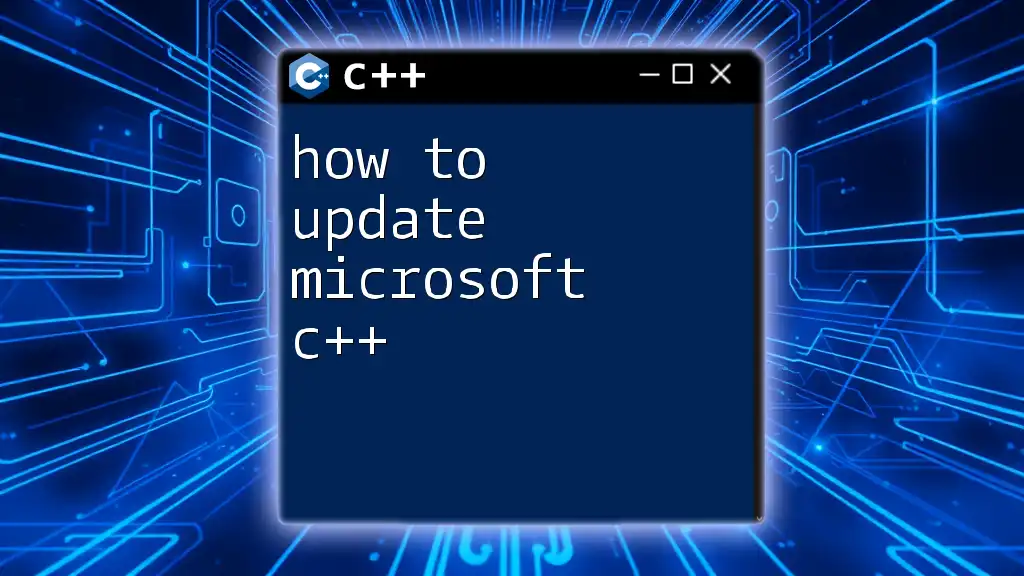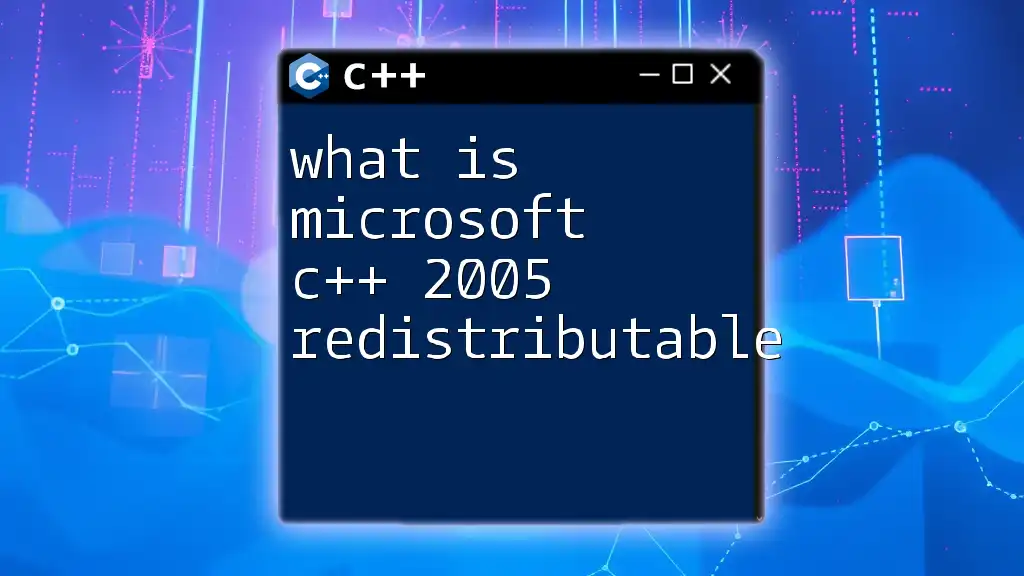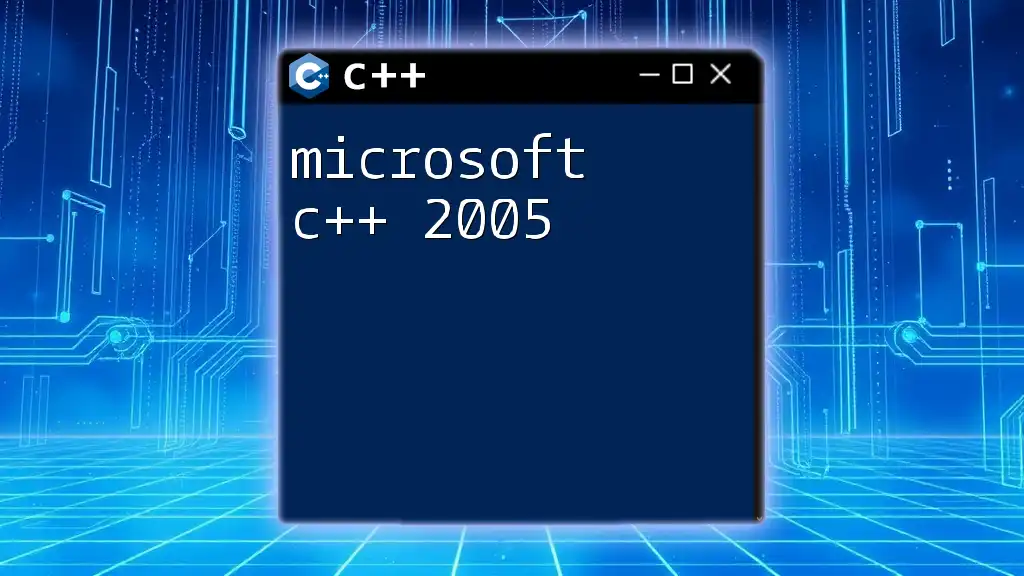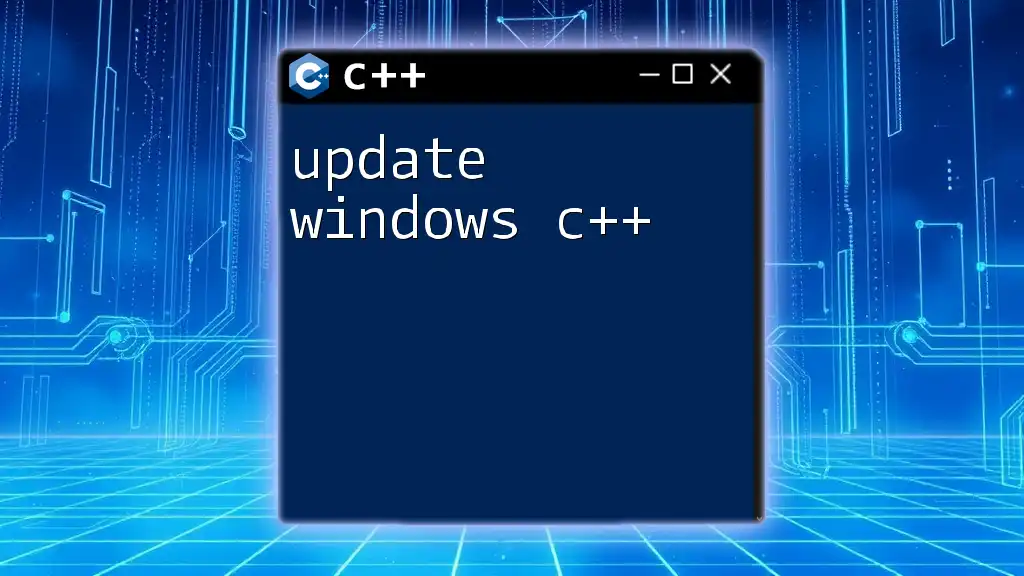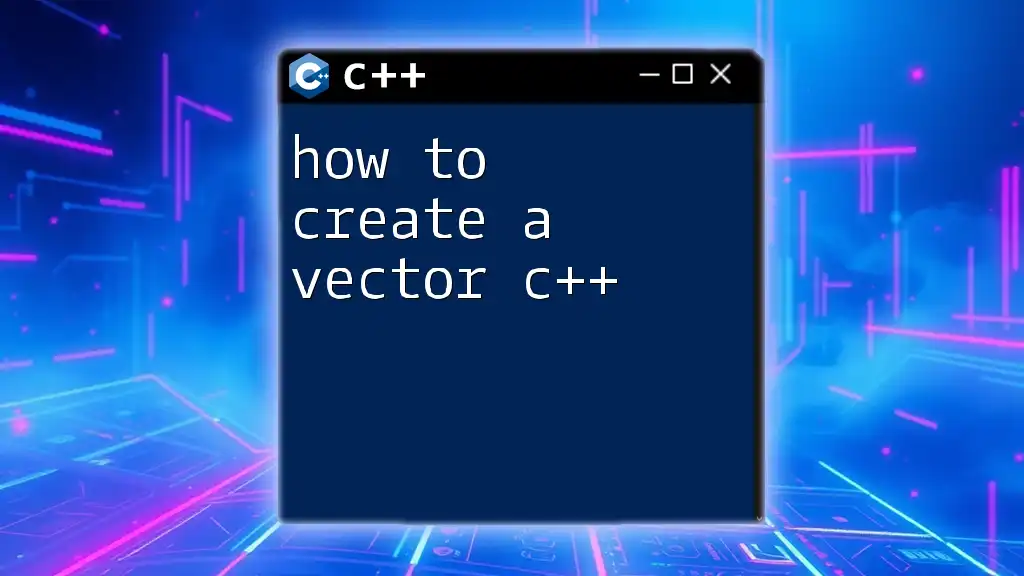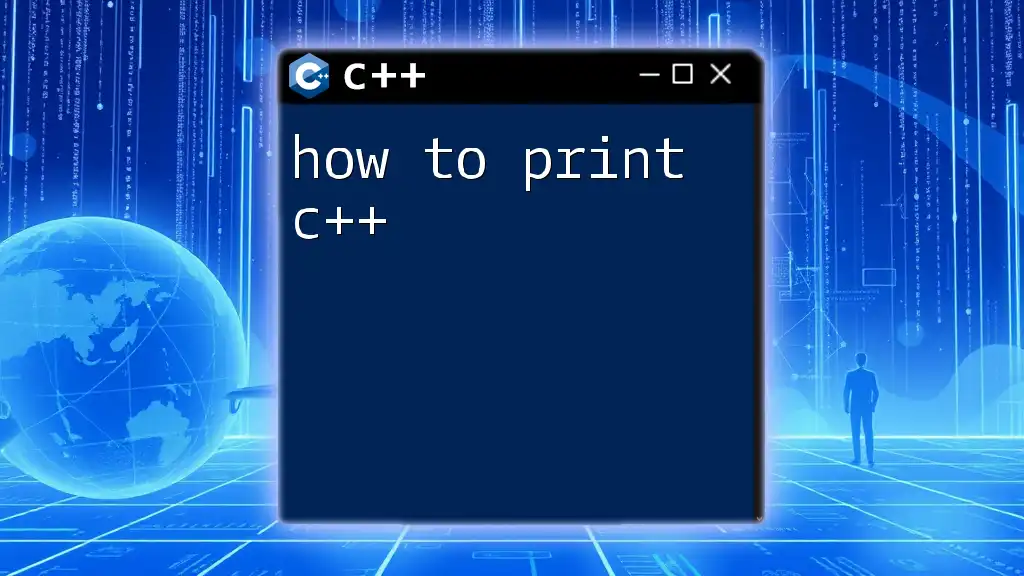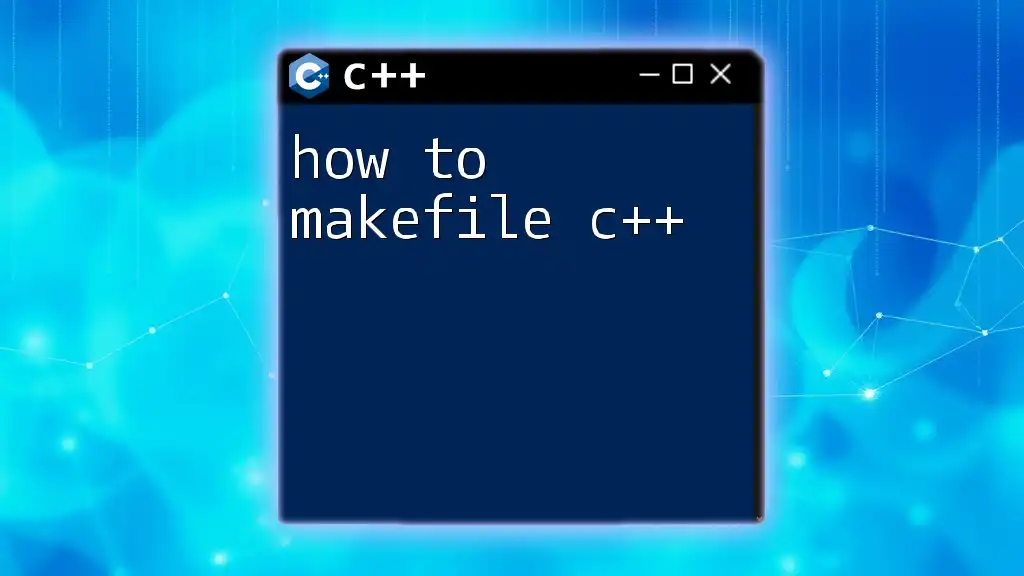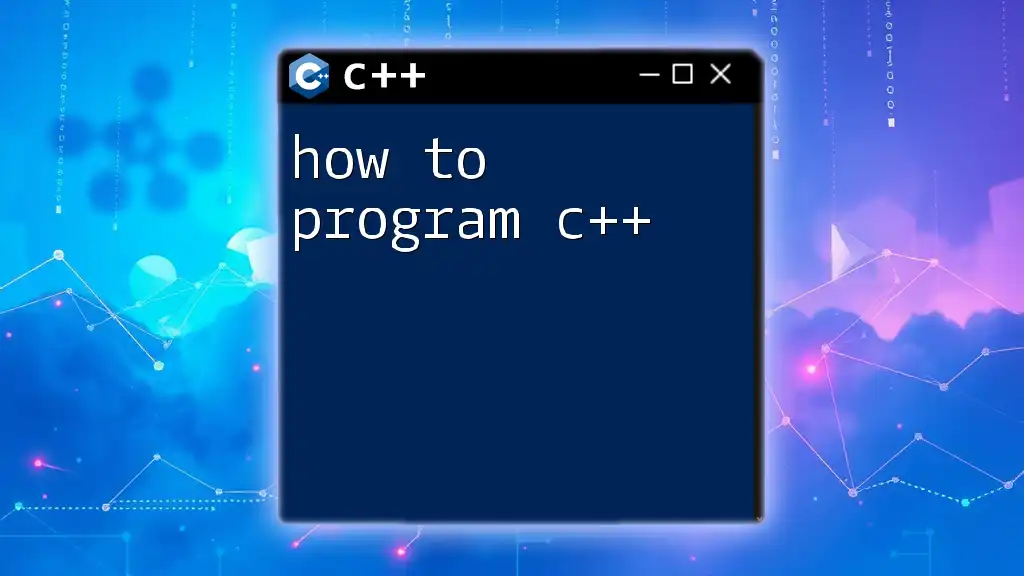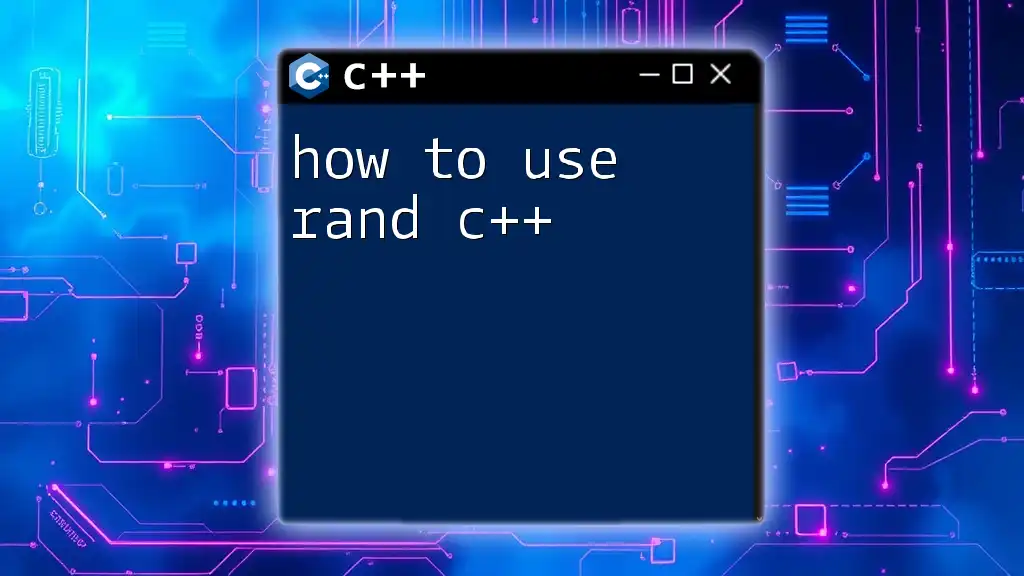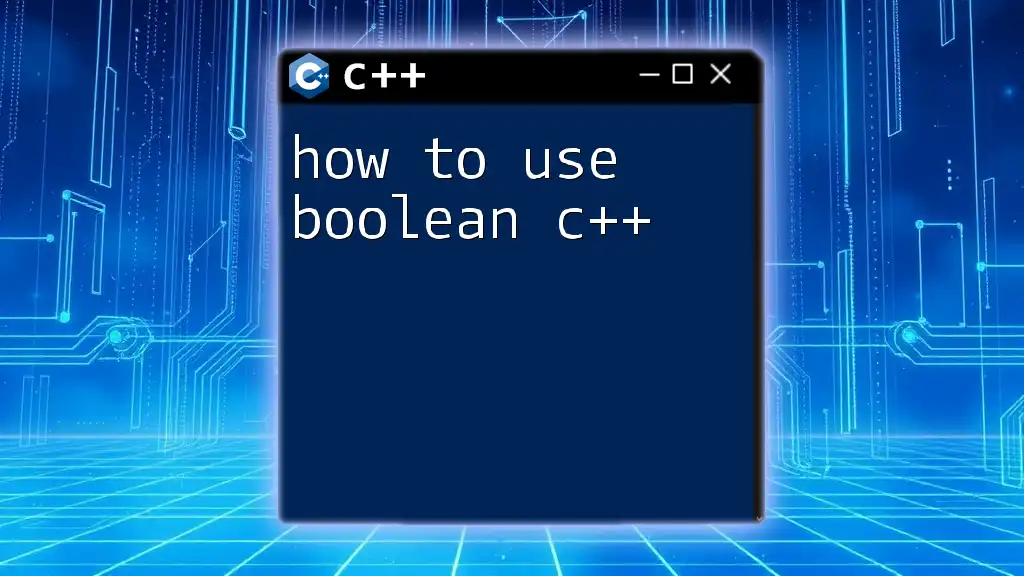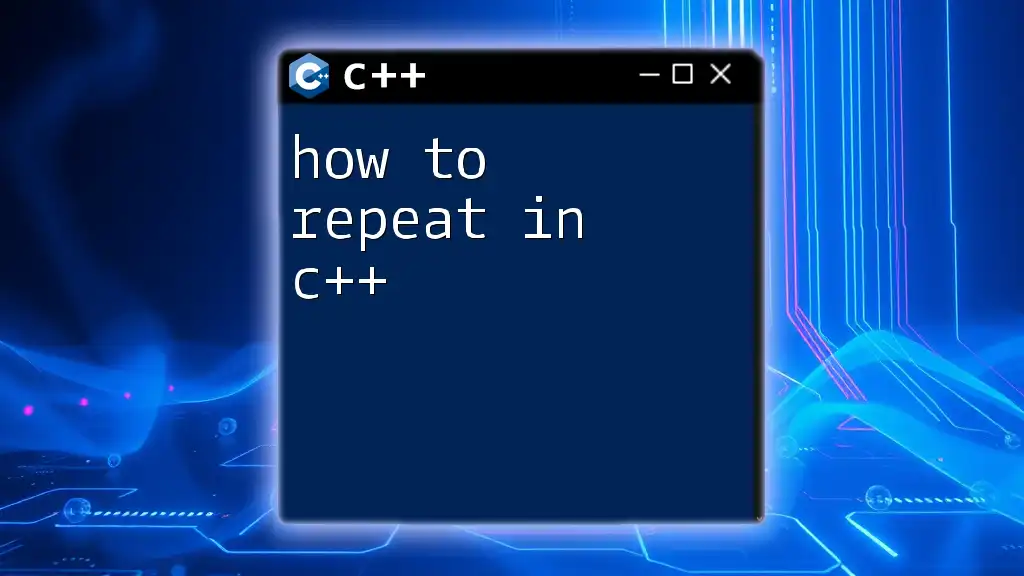To update Microsoft C++, you can use the Visual Studio Installer, which provides options to update the installed components, including the C++ toolset.
// Open the Visual Studio Installer and select 'Update' next to the C++ workload.
Understanding Microsoft Visual C++
What is Microsoft Visual C++?
Microsoft Visual C++ is an integrated development environment (IDE) from Microsoft designed for C and C++ programming. It combines a powerful code editor, debugging tools, and built-in templates to help developers create high-performance applications for Windows. Being a popular choice among developers, it supports a wide array of programming paradigms and libraries, making it an essential tool for both new and experienced programmers.
Why Upgrade Microsoft Visual C++?
Upgrading Microsoft Visual C++ is vital for several reasons:
- Enhanced Security Features: Updates often include security patches that protect your applications and systems from vulnerabilities.
- Improved Performance and Stability: Each new version typically offers optimizations and bug fixes that enhance your application's performance.
- Access to New Features and Libraries: Upgrades introduce additional tools and libraries that can simplify coding tasks and improve functionality.
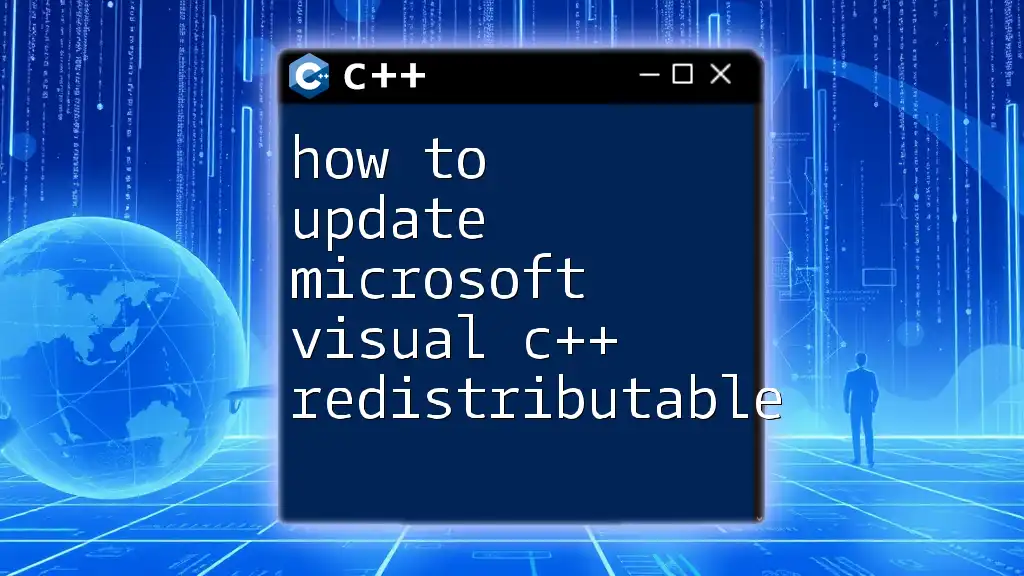
How to Update Microsoft Visual C++
Checking Your Current Version
Before you can update Microsoft C++, it’s essential to know which version you currently have. To find out:
- Open Microsoft Visual Studio.
- Navigate to the Help menu and select About Microsoft Visual Studio.
- A dialog box will appear, displaying version information like this:
Microsoft Visual C++ Version 14.29.30133.0
This information is crucial to ensure compatibility with your projects and to check if an update is necessary.
Using Visual Studio for Updates
Navigating the Visual Studio Installer
Updating Microsoft C++ through the Visual Studio Installer is the most straightforward method. Follow these steps:
- Open the Visual Studio Installer from your Start menu.
- Locate the installed version of Visual Studio that includes Microsoft C++.
Step-by-Step Update Process
- In the Visual Studio Installer, find your current version and click on the Modify button.
- Review the installed components. Ensure that Desktop development with C++ is checked.
- Click on the Update button, and the installer will download and apply the latest updates automatically.
Tips for Successful Updates
Before you start the update process, it’s wise to backup your projects. Ensure that all relevant code is saved and version-controlled. This precaution can save you from potential issues after the update.
Additionally, check for compatibility of your current projects with the new version. Reviewing release notes can provide insights into any breaking changes that might affect your codebase.
Updating Microsoft C++ Manually
Downloading the Latest Version
If you prefer to update Microsoft Visual C++ manually, you need to download it directly from the official Microsoft website. Navigate to their downloads page, where you can find the latest version. Make sure to confirm the system requirements for the version you are downloading to avoid installation issues.
Installation Instructions
Once you have downloaded the installer, follow these steps:
- Double-click on the installer file to launch the setup.
- Choose the installation location and components you wish to include.
- Click Install to start the process.
Be patient, as this may take some time depending on your internet connection and system performance.
Common pitfalls during installation include insufficient disk space or the presence of previous versions that might conflict with the current installation. Address these issues beforehand by clearing disk space or uninstalling older versions if necessary.
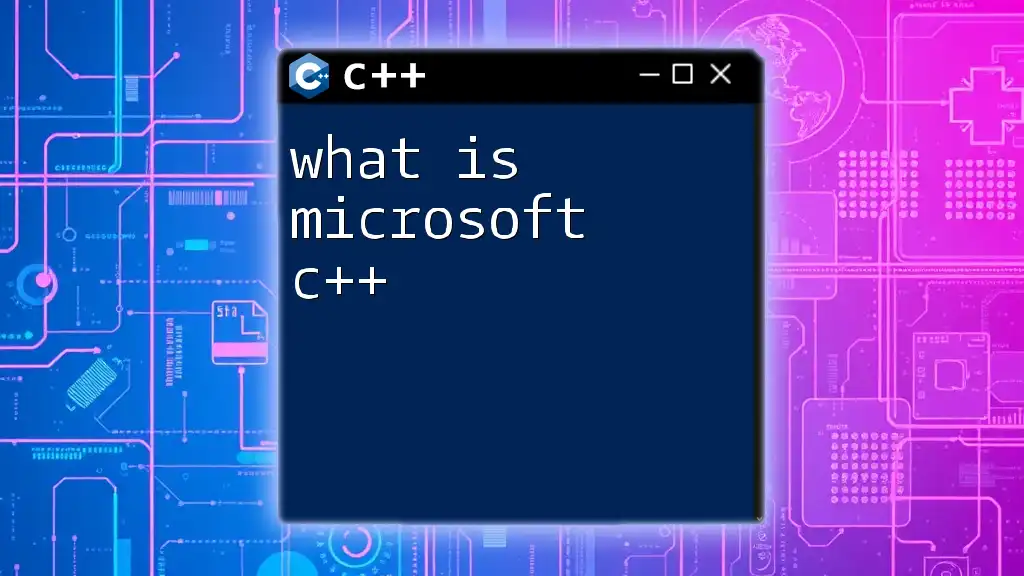
Troubleshooting Common Update Issues
Error Messages During Update
As with any software, you may encounter error messages during the update process. Some common errors include:
- "Update Failed": Ensure that you have a stable internet connection and that no antivirus software is blocking the update.
- "Missing Prerequisites": Follow the prompts to install any required components like .NET Framework or Windows SDK, as these dependencies are often needed for new installations.
Rollback Options
If you experience issues after the update, you might want to revert to your previous version. Here’s how to do that:
- Open the Control Panel.
- Go to Programs and Features.
- Locate Microsoft Visual C++ (version number), click on it, and select Uninstall.
- Follow the prompts to remove the newer version.
After uninstalling, you can reinstall your previous version using a backup installer if you have it.

Additional Resources for Users
Documentation and Learning Materials
To further enhance your understanding and troubleshooting skills, refer to the official Microsoft documentation. The documentation provides comprehensive resources and programming guidelines. Websites like Microsoft Docs and MSDN are excellent places to start.
Additionally, consider accessing various online courses and tutorials that focus on Microsoft Visual C++. These resources can help improve your coding level and adapt to new features introduced in updates.
Community Support
The developer community can be an invaluable resource when facing issues. Platforms like Stack Overflow, Microsoft Developer Community, and Reddit can connect you with experienced developers who might have encountered similar problems. Engaging in discussions can lead to solutions and enhance your overall knowledge of Microsoft Visual C++.
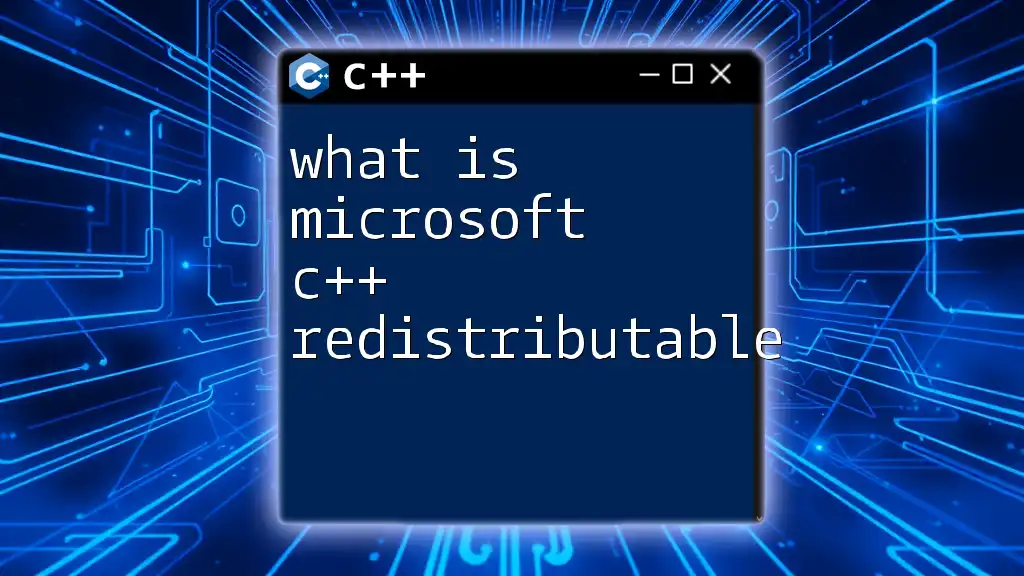
Conclusion
Updating Microsoft Visual C++ is essential for maintaining security, stability, and performance in your applications. By following the steps outlined in this guide, you can ensure that your development environment is always equipped with the latest tools and features. Staying informed about updates will help you leverage the full potential of Microsoft Visual C++.
Remember to explore additional resources on C++ commands offered by our company and keep honing your programming skills!

